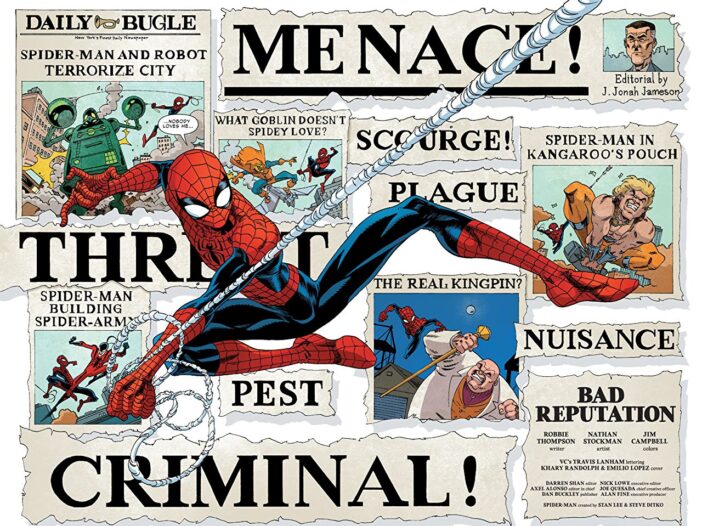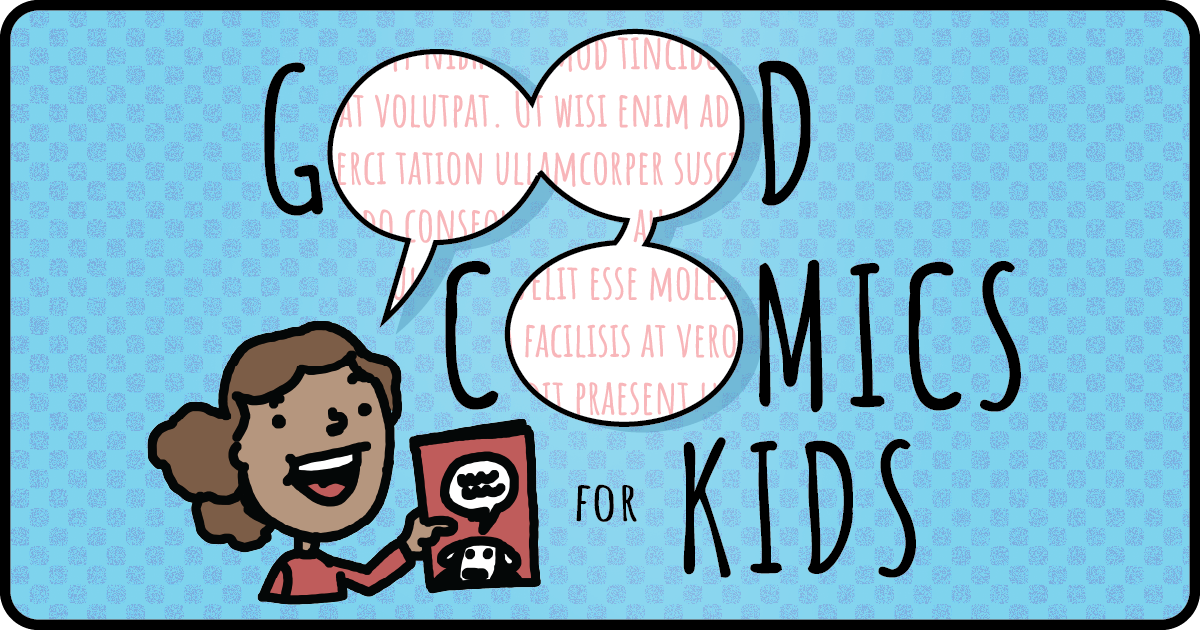
Review: “Spidey: Freshman Year” and “The Unstoppable Wasp: GIRL Power”

Marvel has recently repackaged two complete comic book series, both of which were rather excellently made, but neither of which seemed to find their audiences fast enough to stick around as monthly comics longer than a year: The Robbie Thompson-written, 12-issue Spidey and the Jeremy Whitley-written, eight-issue run of The Unstoppable Wasp.
Each is being republished in a somewhat smaller, kid hand-friendly 6-by-9-inch format–an apparent compromise between the standard 6.5-by-10-inch trade paperback size and the older, manga-like digest-size that rarely suited comics written and drawn to be bigger–with a unified trade dress. Despite the similarities in quality and presentation, however, the two books are really quite different in approach.
ADVERTISEMENT
ADVERTISEMENT

For Spidey: Freshman Year, Thompson seemed to be going for a new reader-friendly series starring one of the publisher’s most popular and longer-lived characters. Although the book is set in the first year or so of Peter Parker’s career as Spider-Man, Thompson doesn’t attempt to rewrite or reboot the existing stories but instead seems to be aiming for a continuity-lite take on a teenage, just-getting-started Spider-Man.
So, for example, while Spidey regularly encounters many of his classic villains here, some of them lightly redesigned, none of these battles are presented as their first encounters. He knows who they are, they know who he is and readers are expected to have a good idea who they are, too.
And any reader who has ever read a Spider-Man comic or seen a Spider-Man movie or cartoon will know most of those villains and the other characters pretty well, just as a reader can probably guess at the contents in broad strokes, at least regarding the daily slings and arrows Peter has to suffer in his civilian life, like trying to keep his identity secret, being bullied at school by Flash Thompson, worrying about the financial well-being of his Aunt May, and contending with a cheap, mean and anti-Spider-Man boss in J. Jonah Jameson.
The greatest deviation from the “real” freshman year of Spider-Man’s wall-crawling probably comes in the form of the occasional team-ups, as Iron Man, The Black Panther and Captain America all get an issue with Spidey, sometimes sharing their villains with him.
Although the approach to the single issues is mostly done-in-one–which is also reflective of the book’s apparent targeting of newer Spider-Man readers–Thompson does have several ongoing subplots that bind the book into something of an overall arc, including Peter’s crush-turned-friendship-turned-romance with Gwen Stacy, a gradual détente with Flash (encouraged by Gwen, who asks Peter to help tutor him) and Doctor Octopus’ assembling of a Sinister Six. It’s all quite fun and appealing, delivering all of the best parts of Spider-Man comics in an accessible way, without any of the stumbling blocks that might keep the spider-curious from reading, say, Amazing Spider-Man or any of the other modern, canonical Marvel Universe books with their decades of complicated continuity and aging away from the core concepts of the character.
While the writing seems to gear the book toward being as accessible as possible, the art isn’t typical of similar comics from Marvel and DC. That is, it’s not drawn any differently than other Marvel comics.
Nick Bradshaw, who I think is probably one of the better superhero artists working today, brings a hyper-detailed approach to the first three issues, after which the baton is passed to Andre Lima Araujo and then Nathan Stockman, for four and five issues respectively.
Araujo’s style is a stark contrast to Bradshaw’s, and his superheroes all look slightly goofy, the way in which grown men wearing strange costumes and wandering about the real world would look; only his Spider-Man is really slightly exempt from this effect. Stockman’s art was much more traditional superhero fare and a better fit with Bradshaw’s aesthetic.
All three are great, though. It’s just strange to see such strong style in what Marvel is–perhaps retroactively now, I guess–marketing as a “first” Spider-Man comic for kids.

Meanwhile, in Unstoppable Wasp: GIRL Power, writer Jeremy Whitley is introducing a bran-new legacy version of an original Avenger character, and he’s doing it in such a tight, perfectly-plotted story arc that even though the comics collected within were originally published and meant to be read serially, GIRL Power now reads like an original graphic novel.
The new Wasp is Nadia, who was introduced in the pages of All-New, All-Different Avengers by Mark Waid and company before graduating to her own solo book.
Nadia is the long lost daughter of the late Hank Pym and his late first wife, whom he had married before even meeting Janet Van Dyne, who would become The Wasp. She was secretly raised in a Russian “Red Room” spin-off, the mad science branch of the assassination program that produced Black Widow.
After escaping by mastering her father’s size-changing Pym particles, she came to America and became a superhero, taken under the wasp wings of her late father’s second wife Janet and the Avengers’ butler Jarvis, both of whom play major roles in the series, with Jarvis serving as a sort of put-upon Alfred to Nadia’s Batman.
An irrepressible juggernaut of optimism and energy, Nadia brightens the jaded, cynical hearts of everyone she meets. After realizing that the reason most of the ingenious super-scientists in the Marvel Universe are middle-aged white men because when the guys like Tony Stark and her father go looking for the next generation of scientists, they inevitably look for younger versions of themselves, she decides to devote herself to founding “Genius In action Research Labs”. It’s a poor acronym (in her defense, she was raised in a Russian bunker and English isn’t her first language), but she and Jarvis go about recruiting a group of young girl geniuses from New York City who are diverse in background as well as scientific specialty.
This being a Marvel super-comic, she sometimes gets further side-tracked by having to fight a giant robot, professional wrestlers-turned-protection racket muscle, and giant animals…sometimes with the help of other superheroes, like Ms. Marvel, Mockingbird, and Moon Girl and Devil Dinosaur.
The mode of the book is consistently comedic, as Whitley finds humor in Nadia’s fish-out-of-water nature, the inevitable personality clashes that occur almost every time her optimism bumps up against someone else’s realism, and how easily distracted she is.
That’s in large part what makes the emotional arc of the book so devastatingly effective, as ever so gradually we see Nadia showing gradual signs of losing what at first appeared to be her basic personality traits, as when she’s forced early on to resort to the brutal violence she was trained in to resolve a conflict she wanted to mitigate with words.
As the book reaches its climax, when she unintentionally does the thing Hank Pym is still more or less defined by, and she and readers learn that some of those traits were also symptoms of a mental illness that she may have also inherited from her father, along with his genius. It’s pretty heart-breaking stuff.
ADVERTISEMENT
ADVERTISEMENT
Which isn’t to imply that the book is sad, or that it doesn’t end happily, it’s just got a lot of emotional content, and that content hits particularly hard given how light-hearted the book starts off, and how fun and funny it is throughout, with only glimmers of greater turmoil in Nadia’s inner life showing up here and there.
These eight issues were previously collected into two trade paperbacks— Unstoppable and Agents of GIRL—and they must have sold well enough in that format to justify not only this complete collection, but the return of the comic as part of Marvel’s “Unlimited” line. The first handful of the new series just had its first trade paperback collection, Unstoppable Wasp: Unlimited Vol. 1 — Fix Everything, released. That book, which picks up after the conclusion of GIRL Power, provides readers with Nadia’s actual diagnosis of bipolar disorder.
Elsa Charretier draws the first six issues of the comics appearing in GIRL Power, and thus really defines the look and feel of the book. In addition to Nadia, Jarvis, and Janet, she designs and introduces all of the new characters who will become part of GIRL and draws the aforementioned guest stars. For the last two issues, when the focus shifts a bit to the other Wasp, and Janet takes over as narrator, guest artists arrive to finish up the series.
Unstoppable Wasp may skew a bit older than Spidey—for what it’s worth, Marvel rates the former as “T+” for teens and up, and the later as “T” for most readers —but both are good comics for readers new to this genre, this publisher or these characters, regardless of their age.
Filed under: Reviews, Young Adult
About J. Caleb Mozzocco
J. Caleb Mozzocco is a way-too-busy freelance writer who has written about comics for online and print venues for a rather long time now. He currently contributes to Comic Book Resources' Robot 6 blog and ComicsAlliance, and maintains his own daily-ish blog at EveryDayIsLikeWednesday.blogspot.com. He lives in northeast Ohio, where he works as a circulation clerk at a public library by day.
ADVERTISEMENT
ADVERTISEMENT
SLJ Blog Network
Name That LEGO Book Cover! (#53)
Cover Reveal and Q&A: The One and Only Googoosh with Azadeh Westergaard
Fighting Public School Book Bans with the Civil Rights Act
Take Five: Middle Grade Anthologies and Short Story Collections
ADVERTISEMENT







